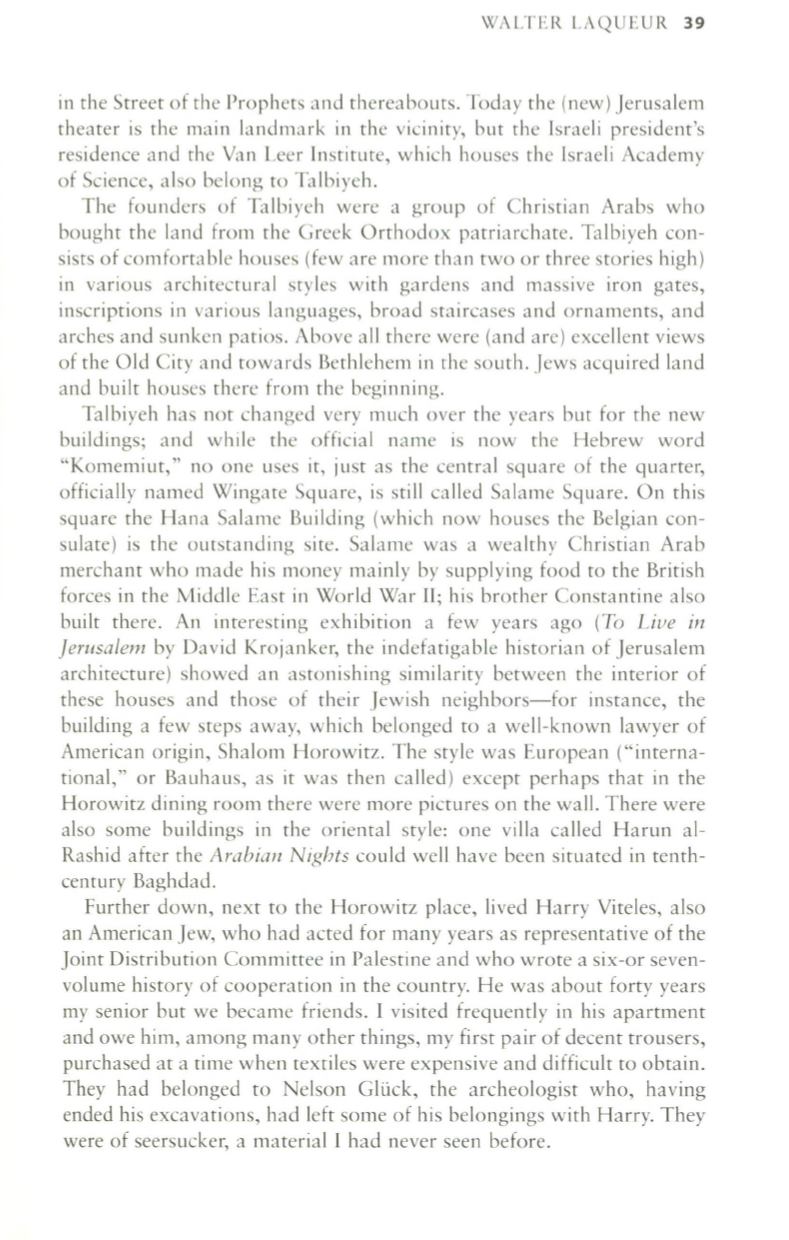
WALTER LAQUEUR
39
in the Street of the Prophets and thereabouts. Today the (new) Jerusalem
theater is the main landmark in the vicinity, but the Israeli president's
residence and the Van Leer Institute, which houses the Israeli Academy
of Science, also belong to Talbiyeh.
The founders of Talbiyeh were a group of Christian Arabs who
bought the land from the Greek Orthodox patriarchate. Talbiyeh con–
sists of comfortable houses (few are more than two or three stories high)
in various architectural styles with gardens and massive iron gates,
inscriptions in various languages, broad staircases and ornaments, and
arches and sunken patios. Above all there were (and are) excellent views
of the Old City and towards Bethlehem in the south. Jews acquired land
and built houses there from the beginning.
Talbiyeh has not changed very much over the years but for the new
buildings; and while the official name is now the Hebrew word
"Komemiut," no one uses it, just as the central square of the quarter,
officially named Wingate Square, is still called Salame Square. On this
square the Hana Salame Building (which now houses the Belgian con–
sulate) is the outstanding site. Salame was a wealthy Christian Arab
merchant who made his money mainly by supplying food to the British
forces in the Middle East in World War II; his brother Constantine also
built there. An interesting exhibition a few years ago
(To Live in
Jerusalem
by David Krojanker, the indefatigable historian of Jerusalem
architecture) showed an astonishing similarity between the interior of
these houses and those of their Jewish neighbors-for instance, the
building a few steps away, which belonged to a well-known lawyer of
American origin, Shalom Horowitz. The style was European ("interna–
tional," or Bauhaus, as it was then called) except perhaps that in the
Horowitz dining room there were more pictures on the wall. There were
also some buildings in the oriental style: one villa called Harun al–
Rashid after the
Arabian Nights
could well have been situated in tenth–
century Baghdad.
Further down, next to the Horowitz place, lived Harry Viteles, also
an American Jew, who had acted for many years as representative of the
Joint Distribution Committee in Palestine and who wrote a six-or seven–
volume history of cooperation in the country. He was about forty years
my senior but we became friends. I visited frequently in his apartment
and owe him, among many other things, my first pair of decent trousers,
purchased at a time when textiles were expensive and difficult to obtain.
They had belonged to Nelson Gluck, the archeologist who, having
ended his excavations, had left some of his belongings with Harry. They
were of seersucker, a material I had never seen before.


